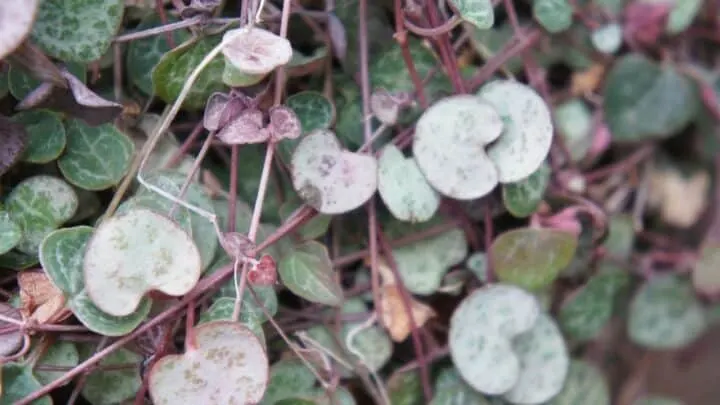You are reading this article to learn more about Variegated String of Hearts care and Variegated Sweetheart Vine Hearts information.
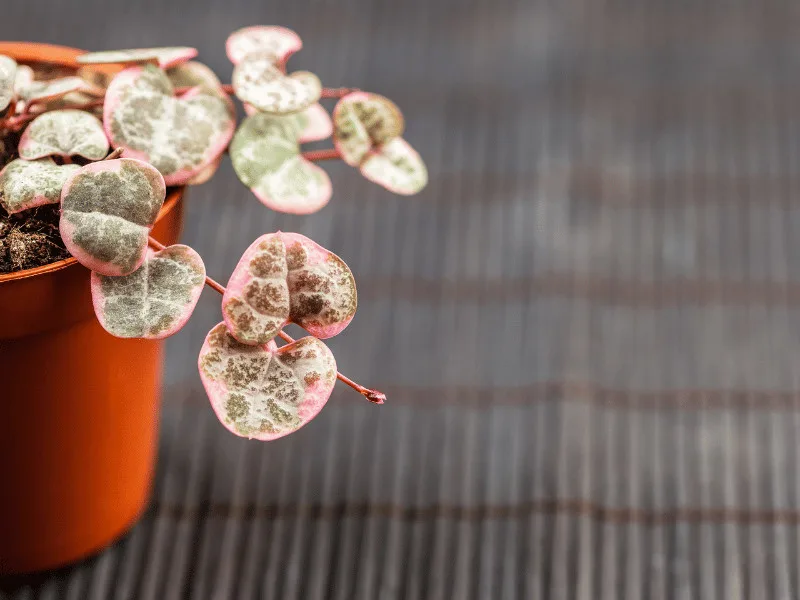
Takeaways
| Species | Ceropegia woodii ‘Variegata’ |
| Synonyms | Variegated String of Hearts, etc. |
| Family | Apocynaceae |
| Genus | Ceropegia |
| Growth | Climbing, trailing |
| Height | 4.5 feet |
| Width | 6.5 feet |
| Soil | Well-draining soil mix |
| Watering | Water every 7-14 days |
| Light | Bright indirect |
| Temperature | Min: 65.0°F (18.3°C), Max: 90.0°F (32.2°C) |
| Humidity | Min: 40.0, Max: 50.0 |
| Propagation | Stem cuttings |
| Toxicity | Non-toxic to cats, dogs, and humans |
Variegated String of Hearts
Variegated String of Hearts or Ceropegia woodii Variegata is a unique plant for artistic gardeners who need something extra than the classic green in their plants.
This plant is not just variegated, but it has pink variegation!
This plant is native to South Asia, Africa, and Australia and belongs to the Apocynaceae family.
This plant’s other common names include the Hearts-on-a-String, Collar of Hearts, Pink Variegated String of Hearts, Sweetheart Vine, and Variegated Chain of Hearts.
This low-maintenance vine has tiny heart-shaped leaves colored pink, white, and green. The center of the succulent leaves is greenish-white with pink leaf margins.
The pink color on the edges darkens on the backside of the foliage, creating a colorful palette.
The creeping vines will adorn any container, but I love growing them in hanging baskets where the colorful leaves cascade downwards and flaunt the color on both sides of the leaves.
This is a beginner-friendly plant, and it’s recommended for lazy gardeners too. Ceropegia genus was first introduced in 1753, but they share the subfamily with the famous Hoya genus.
These plants are also referred to as wax fountains for their unique flowers. In some cultures, these plants are used as ornamentation.
This is a fragile but easy plant, and this article shares everything you need to know about growing it as a houseplant.
Variegated String of Hearts Care
The Variegated String of Hearts needs bright, indirect sunlight and temperatures of 65 to 90 degrees Fahrenheit (18 to 32 degrees Celsius). Plant it in a cactus soil mix containing coarse sand and perlite. Maintain an indoor humidity of close to 50%. Water when 90 % of the growing medium is dry. Fertilize this plant once or twice yearly between March and August using regular houseplant fertilizer.
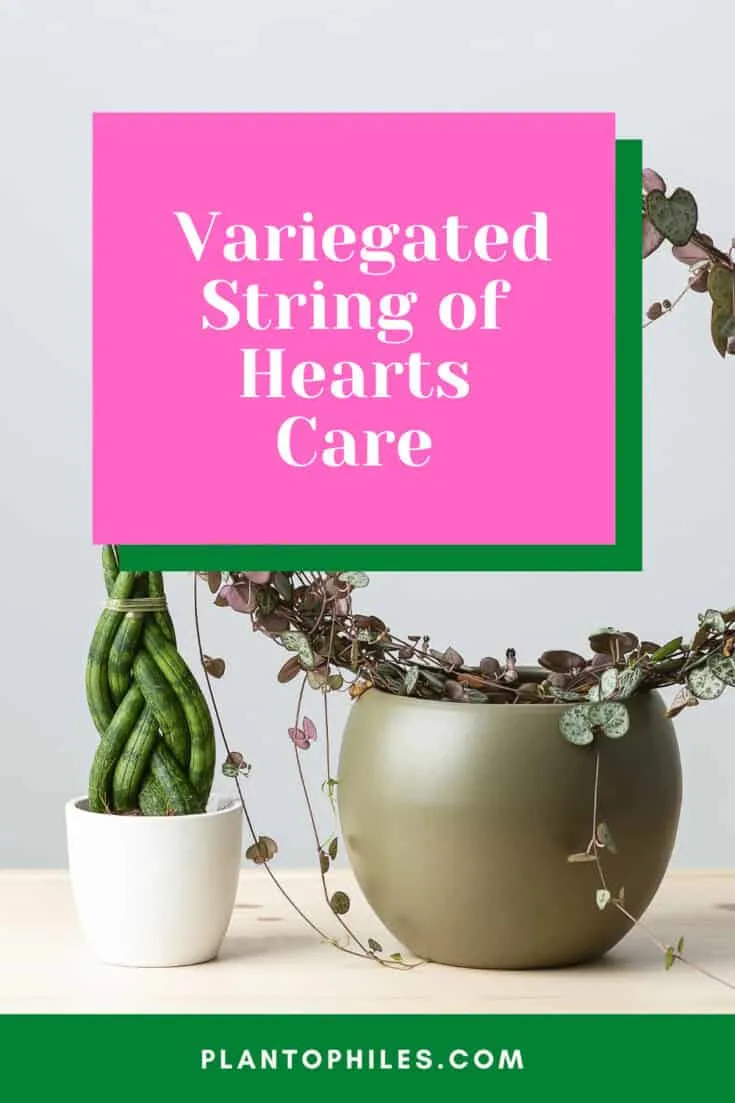
Table of Contents
1. What is the best Soil for Variegated String of Hearts?
Plant the Variegated String of Hearts in a free-draining soil mix. You can create your soil mix or invest in a premade succulent or cactus mix.
If your soil mix lacks drainage, you can amend it with a handful of perlite or pumice.
I prefer creating my soil mix, which includes the following ingredients:
- Perlite
- Gravel
- Coco coir
- Coarse sand
2. How often should I Water my Variegated String of Hearts?
Water Variegated String of Hearts once or twice weekly in the active growing summer season. It does not grow actively in autumn and winter. Water it every two weeks during the dormancy period.
The weekly watering frequency will change depending on the light, temperature, and season.
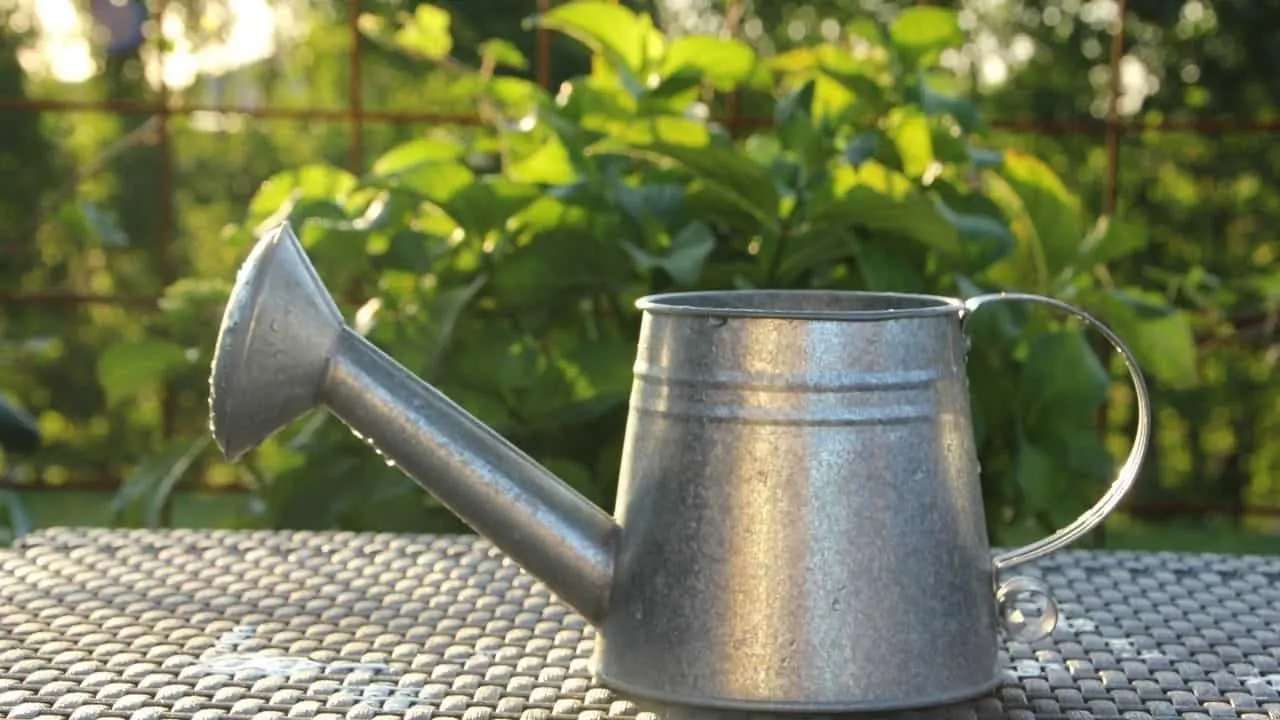
This succulent plant is not picky about watering, meaning it will do just fine if you skip watering occasionally.
However, keeping it underwatered for a long time will create issues, so it’s better to water the Variegated String of Hearts when the potting soil has dried.
90 % of the growing medium should dry before watering the Variegated String of Hearts.
This plant should be watered deeply, but ensure the pot has a drainage hole to remove the excess water.
Letting the extra water remain in the soil can easily lead to a root rot infection. You can read our articles about root rot symptoms and treatment to avoid this issue for your houseplants.
3. What Light Level is best for a Variegated String of Hearts
The Variegated String of Hearts will appreciate a location with bright indirect sunlight for 4-6 hours.
Variegated plants need brighter light than the original green versions to maintain the variegation on the leaves.
The colorful leaves need protection from direct sunlight as that can damage the leaves. If the light at midday is too harsh near the window, you can relocate the pot or hanging basket.
You can also use window blinds or sheer curtains to minimize the intensity of sunlight during peak hours.
4. Temperature
Variegated String of Hearts will grow best in a warm environment with temperatures between 65 to 90 degrees Fahrenheit (18 to 32 degrees Celsius) during the daytime.
This plant is not frost or cold hardy, so avoid exposing it to temperatures lower than 40 degrees Fahrenheit (4.4 degrees Celsius).
If you are growing it in a hanging basket or pot in an outdoor spot, it’s best to shift this plant indoors during winter.
Otherwise, the cold damage will kill this beautiful String of Hearts plant.
This Woodii plant is hardy for outdoor gardening in USDA hardiness zone 10a and 11.
5. What Humidity is Best for the Variegated Sweetheart Vine Hearts?
Variegated String of Hearts needs air moisture levels of 40-50%.
The average household humidity is enough to keep this plant happy.
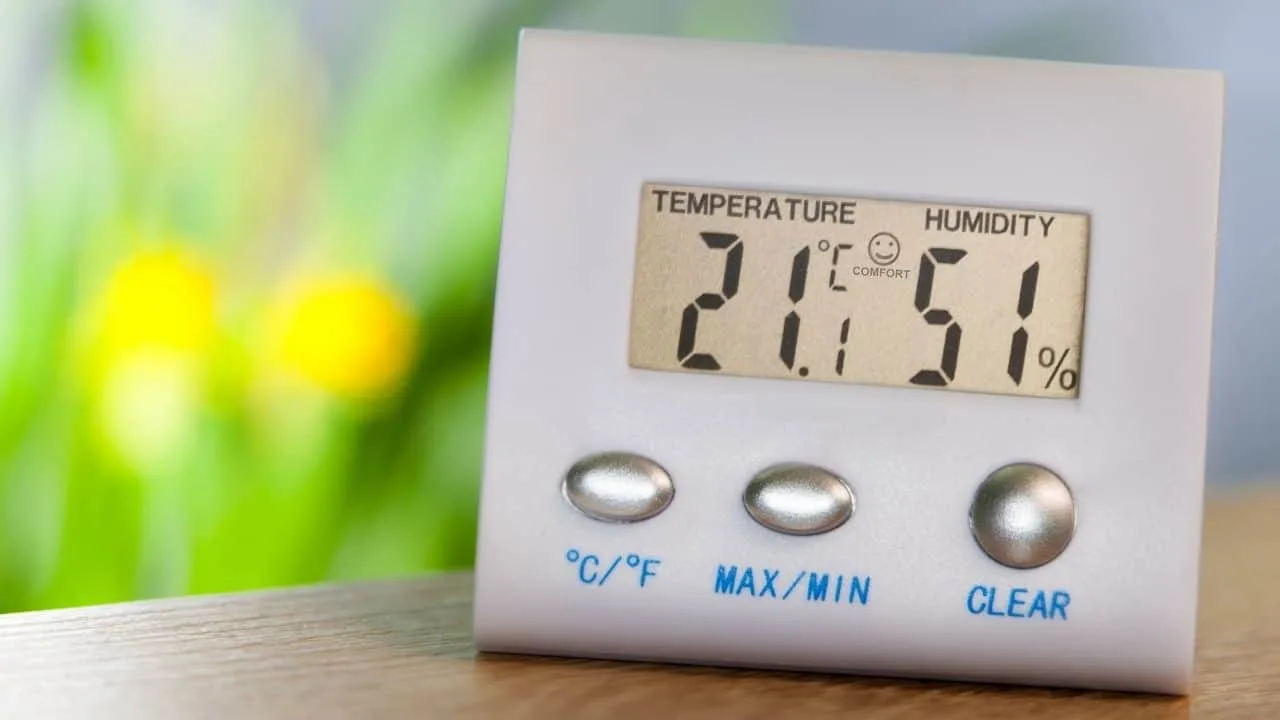
This plant is perfect for growers with low humidity conditions because you do not have to buy a humidifier to fulfill the humidity needs.
In fact, the average household humidity is enough to keep this plant happy.
6. How much Fertilizer does the Variegated Sweetheart Vine need?
Fertilize Variegated String of Hearts once a month in spring and summer.
But I recommend using a regular houseplant fertilizer, at least in the growing season.
Liquid fertilizer is best because you can spray the solution on the long vines or add it directly to the soil.
This plant grows actively from March to August, adding fertilizer during this period.
Since the Variegated String of Hearts is not a heavy feeder, overfertilizing it has damaging effects.
You should also avoid adding anything to the soil in the dormancy or winter.
Fertilizing this plant once or twice a year will encourage blooms.
7. Repotting
This vining plant likes to expand, so if the current pot looks small for your plant, it’s time to repot.
You need a new, bigger pot about two inches larger than what you previously used.
Carefully repot your plant in early spring when the plant is strong enough to handle the transplant shock. Prepare a fresh batch of a well-draining soil mix for your newly repotted plant.
Repotting will give more room to your plant to grow new heart-shaped leaves but avoid disturbing the root system during this process.
You can inspect the roots for any sign of damage or infection. And trim the unhealthy roots before moving your plant to the new pot.
8. How to Prune a Variegated Chain of Hearts?
Pruning is an essential practice for caring for your vining plants. Prune the Variegated String of Hearts to eliminate the old leaves that look weak and discolored.
You should also remove the leggy or overgrown vines to shape your plant.
9. Variegated String of Hearts Propagation
The Variegated String of Hearts is easy to propagate using stem cuttings. Propagate this plant when it is growing actively in spring and summer.
Follow the steps below:
- Look for a healthy, long vine on the mother plant because you will need a 6 inches long stem cutting with healthy leaves. Ideally, the cutting should also have a few leaf nodes for new growth.
- You will also need a pair of clean scissors or pruning shears to cut the cutting. Using sterilized tools is crucial to avoid bacteria or disease issues. Always clean the tools before and after propagation with rubbing alcohol to remove harmful bacteria that could infect the plant.
- Cut the vine near the leaf node. Remove some of the leaves near the bottom end. Let the cuttings dry out for a couple of hours. Dip the stem cutting’s lower end in rooting hormone, or add it to the water.
- You can root the Variegated String Heart cutting in water or soil. But if you love experimenting, try water propagation.
- Fill a water bottle or glass jar with room temperature, and clean water. Dip the lower end of the stem cuttings underwater, but the leaves should not be underwater.
- Now place this cutting in a warm area with no direct light and let it root. The roots will emerge from the node underwater.
- Water propagation involves changing the water whenever it gets dirty. Changing the water every three or four days is a good practice.
- Root development underwater usually takes 2 weeks. Water propagation allows you to see the roots growing daily, so growers enjoy it.
- Once the rootlets are 1 or 2 inches long, you can shift your cutting to a soil-based medium.
10. Variegated Chain of Hearts Flowering
The beautiful flowers on this plant form an umbrella-like canopy, with five or more petals for each flower.
All these petals will join at the tip to create a tubular look.
The pinkish-purple blooms will appear on the plant in the summer season.
11. String of Hearts Variegated Growth Rate
The vines on this creeping plant will reach a maximum height of 4 inches (10 cm); however, they can grow horizontally to a length of 13 ft (4 m).
The heart-shaped foliage will reach a maximum size of 4 inches (10 cm). These leaves will grow in alternating patterns on the vine or stem.
The plant’s purple stem also adds color to the plant.
Variegated String of Hearts Problems
Pests
The Variegated String of Hearts is a resilient plant that can fall prey to pest issues.
Mealybugs are one of the annoying houseplant pests that will bother this beautiful plant. They will feed on the fleshy leaves and hide near the leaf nodes or undersides of the leaves.
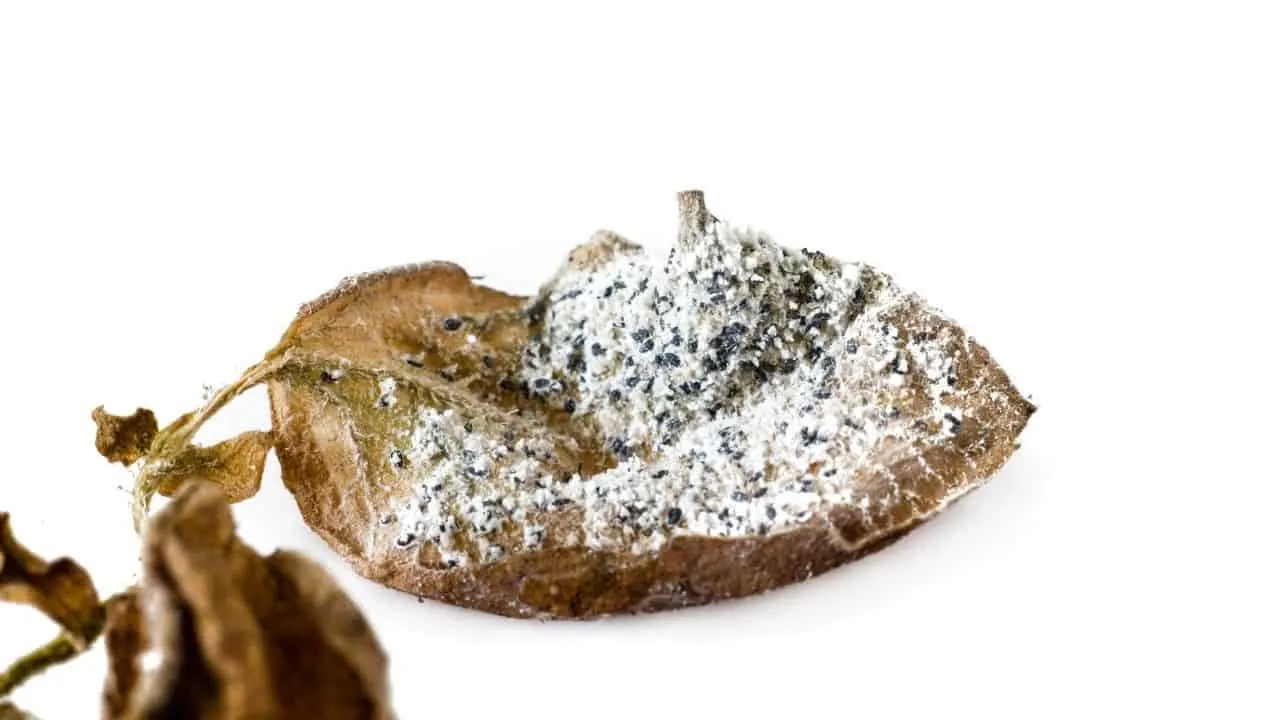
After feeding on the plant, they will leave honeydew and a cottony mass on the foliage.
Once you notice any of these signs of infection or poor growth, you must treat the plant immediately.
Start by pruning the heavily damaged leaves. Spray your plant with a strong stream of water to drown these bugs.
You should also apply neem oil to infected leaves. If you repeat the treatment for a few weeks, you can save your plant from further damage.
Other common pests are:
- Thrips
- Whiteflies
- Aphids
- Scales
Tips for Growing Variegated String of Hearts
- Soggy soil or overwatering is a big no for this plant; therefore, maintain a watering schedule according to your plant’s growing environment.
- Grow this plant next to a window or any other location with bright light to help it maintain its coloration. You should keep the pot in the sunniest room of your house.
- Keep the cutting in a window when propagating but ensure it receives indirect sunlight.
- Rotate the plant every few days while watering to distribute the sunlight evenly.
How to Make a String of Hearts Fuller
To make a string of hearts fuller, ensure it gets sufficient light. Bright indirect light will ensure that the plant can conduct sufficient photosynthesis and will grow more and more new shoots and leaves. In addition, take cuttings from your mother plant and plant them back into the pot.
Variegated String of Hearts for Sale
Variegated String of Hearts is available for sale at the following online retailers: Etsy, Amazon, and Mountain Crest Gardens.
Variegated String of Hearts Pink
The Variegated String of Hearts will develop a pink hue on its leaves when it gets lots of light. To enhance the pink color on your plant, ensure it gets 3-4 hours of bright direct light in the morning. This can be achieved by putting it in an eastern-facing window. The less light the Ceropegia Woodii variegata receives, the more it will revert to green and white variegation.
More String of Plants
Here is a list of other “String of” Plants:
- Senecio herreianus (String of Beads)
- Senecio radicans (String of Bananas)
- Senecio rowleyanus (String of Pearls)
- Hoya carnosa (Hindu Rope Plant)
- Sedum morganianum (Burro’s Tail or Donkey Tail)
- Dischidia nummularia (String of Nickels)
- Curio rowleyanus (String of Watermelons)
- Peperomia prostrata (String of Turtles)
- Rhipsalis baccifera (Mistletoe Cactus or Chain Cactus)
FAQ
How do the Variegated String of Hearts and the original String of Hearts plant differ?
The plant care for the Variegated String of Hearts and the original String of Hearts are similar. The only difference is that the variegated String of Hearts needs more light than the green version.
Is the Variegated String of Hearts plant a safe for cats and dogs?
This plant is not toxic for pets or humans. However, it is encouraged to keep it away from the reach of children and your pets as you do not want them to consume the leaves.
Can the Variegated String of Hearts survive in low light conditions?
Low light is not recommended for this variegated plant. Growing under inadequate light will result in pale leaves, leggy growth, and lots of space between individual leaves. This plant needs bright, indirect light for the best growth.
What is the best spot for a Variegated String of Hearts indoors?
Place the pot on a high shelf close to an eastern- or western-facing window where the lacey leaves will elegantly fall downwards and get bright indirect light.
Conclusion About Variegated String of Hearts Care
To care for the Variegated String of Hearts provide bright indirect light. The ideal temperature is 65 to 90 degrees Fahrenheit (18 to 32 degrees Celsius). Use soil for cacti containing coarse sand and perlite and a humidity of around 50%. Water once the top 2 inches (5cm) of soil are dry about once a week. Fertilize in the growing season in spring and summer every three months.

Daniel has been a plant enthusiast for over 20 years. He owns hundreds of houseplants and prepares for the chili growing seasons yearly with great anticipation. His favorite plants are plant species in the Araceae family, such as Monstera, Philodendron, and Anthurium. He also loves gardening and is growing hot peppers, tomatoes, and many more vegetables.

